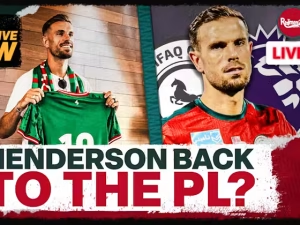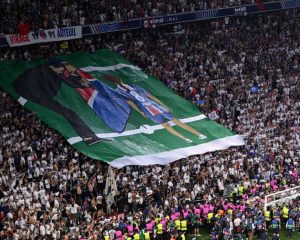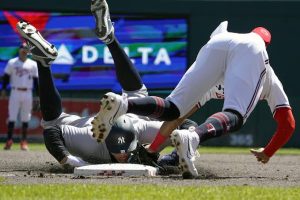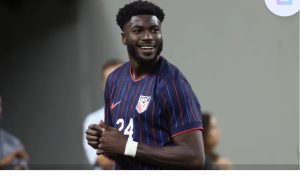
Competing Legends: The Rivalries That Shaped Sports History
Throughout the history of sports, some of the most compelling and unforgettable moments have emerged not from individual brilliance alone, but from legendary rivalries—intense competitions between athletes or teams whose greatness is measured not only by their achievements but also by the opponents who pushed them to their limits. These “competing legends” do more than entertain; they elevate the sport itself, create cultural touchstones, and leave lasting legacies that inspire generations. Rivalries like Muhammad Ali vs. Joe Frazier, Lionel Messi vs. Cristiano Ronaldo, Roger Federer vs. Rafael Nadal, or the Boston Celtics vs. the Los Angeles Lakers have transcended the game and embedded themselves in the fabric of global sports culture.
The Essence of Rivalry
A true sports rivalry is about more than two athletes or teams facing off multiple times. It’s about a clash of styles, personalities, philosophies, and often, ideologies. Rivalries capture the imagination because they reflect conflict—something innate to storytelling and human nature. In sports, that conflict is resolved on the field, the court, or the ring, often in dramatic fashion. The best rivalries balance respect and tension, mutual admiration and fierce competition. They draw out the best in each competitor and often define their careers.
Legends are rarely forged in isolation. Even the most dominant athletes gain deeper respect and recognition when they are matched by a worthy opponent. In this way, legends become interlinked in history—forever remembered not only for what they accomplished but also for who they competed against.
Ali vs. Frazier: The Fight of the Century
No discussion of competing legends is complete without mentioning the iconic rivalry between Muhammad Ali and Joe Frazier. Their trilogy of fights in the 1970s remains one of the most emotionally and politically charged rivalries in sports. Ali, with his flamboyant personality, poetic trash talk, and anti-establishment stance, stood in stark contrast to Frazier’s humble, hardworking demeanor.
Their first fight in 1971, billed as “The Fight of the Century,” saw Frazier hand Ali his first professional loss. The third bout, “The Thrilla in Manila,” is often considered one of the greatest fights in boxing history, with both fighters pushing themselves to the brink of collapse. Beyond the ring, their rivalry echoed the social and political divisions of the era—race, war, class, and identity.
Ali and Frazier showed that competing legends could elevate their sport, capture the world’s attention, and create narratives that go far beyond the final score. Their battles weren’t just physical contests; they were symbolic clashes that defined an era.
Federer vs. Nadal: Art vs. Grit
In tennis, few rivalries match the grace and intensity of Roger Federer versus Rafael Nadal. Federer, with his elegant style and seemingly effortless play, became the embodiment of artistic tennis. Nadal, with his relentless energy and grinding, physical approach, represented tenacity and heart.
Their rivalry began in the mid-2000s and spanned over 40 matches, including some of the greatest finals in Grand Slam history. The 2008 Wimbledon final, where Nadal defeated Federer in five epic sets, is often considered the greatest match ever played. What made their rivalry so impactful was not only the contrast in style but also the mutual respect they consistently showed. Their matches drew millions of viewers and introduced tennis to a broader audience.
Their competition pushed each player to evolve. Federer worked on his fitness and backhand to counter Nadal’s topspin, while Nadal developed a stronger serve and improved his game on faster surfaces to keep up with Federer. They weren’t just trying to outdo each other—they were redefining excellence in their sport.
Messi vs. Ronaldo: Perfection vs. Power
In football, the rivalry between Lionel Messi and Cristiano Ronaldo has captivated fans for over 15 years. Both players have redefined the boundaries of performance and consistency in modern football. Messi, the creative genius known for his vision, dribbling, and playmaking, has been often described as a natural talent. Ronaldo, the epitome of athleticism, drive, and power, is renowned for his heading ability, finishing, and adaptability.
While they’ve played for rival clubs—Barcelona and Real Madrid—their competition extended to every aspect of the sport: goals scored, trophies won, Ballon d’Or titles, and international achievements. Each week during their peaks, fans would eagerly compare performances, analyze statistics, and debate who was truly the greatest.
This rivalry spurred unprecedented growth in La Liga’s global popularity and transformed both players into global icons. Messi and Ronaldo, though rarely confrontational, used each other as benchmarks. Their rivalry wasn’t about hate—it was about an unrelenting desire to be better.
In truth, the Messi-Ronaldo era may never be replicated. It demonstrated how two legends competing at the same time can dominate a sport and shape its narrative for over a decade.
Teams at War: Celtics vs. Lakers
Rivalries between individuals are iconic, but team rivalries carry their own historical weight. The Celtics vs. Lakers rivalry in the NBA is perhaps the most storied in basketball history. Spanning generations, it began in the 1960s when Bill Russell’s Celtics routinely defeated the Lakers led by Jerry West and Elgin Baylor. It was revived in the 1980s with the iconic battles between Larry Bird and Magic Johnson.
What made this rivalry so enduring was the cultural and regional contrast. The Lakers represented Hollywood, flair, and flash, while the Celtics symbolized blue-collar toughness and tradition. When these teams clashed, it wasn’t just a game—it was a clash of identities.
The rivalry reignited in the 2000s with Kobe Bryant’s Lakers battling Paul Pierce, Kevin Garnett, and the Celtics in the 2008 and 2010 NBA Finals. Each series added new chapters to an already rich legacy, reinforcing that rivalries can persist across generations and be reignited by new stars.
The Role of Media and Fans
A crucial element that fuels rivalries is the role of media and fan engagement. Every dramatic gesture, comment, and confrontation is amplified by headlines, social media, and debate shows. Fans take sides, idolize one competitor, and vilify the other, creating a passionate atmosphere that adds to the stakes.
In the digital era, access to stats, highlight reels, and real-time interaction has intensified rivalries. The “GOAT” debate between Messi and Ronaldo is sustained daily on social media. Every tweet, goal, or interview is dissected by millions. While this constant scrutiny can be taxing for athletes, it also immortalizes their efforts.
Media also play a role in framing the narrative. In boxing, promoters built entire events around rivalries. In tennis, broadcasters often highlighted the contrast between Federer’s elegance and Nadal’s grit. These curated narratives make rivalries more than just competitions—they become stories that fans invest in emotionally.
Respect and Legacy
An essential but sometimes overlooked aspect of great rivalries is the deep respect competitors often have for one another. After fierce battles, many legendary athletes express admiration for their rivals. Roger Federer and Rafael Nadal, for example, have formed a friendship off the court, even playing doubles together. Ali later expressed regret for some of the personal attacks on Frazier and acknowledged him as a great champion.
This respect underscores an important truth: it is often a rival who pushes an athlete to reach new heights. Without Frazier, Ali’s greatness would not be as vivid. Without Nadal, Federer’s records would not carry the same weight. Their legacies are interwoven. Competing legends are not enemies—they are co-creators of history.
Conclusion: Legends Are Forged in Battle
The world of sports is filled with records, trophies, and statistics, but what truly endures in our memories are the rivalries—the battles where legends were born, tested, and defined. These competitions gave us not only moments of breathtaking athleticism but also stories of courage, sacrifice, failure, and redemption.
Competing legends raise the bar, inspire future generations, and create the drama that makes sports the global passion that it is. Whether it’s a bout in the ring, a match on the court, or a game on the pitch, the presence of a worthy rival elevates greatness. In the end, it is not just about who wins or loses—it’s about how they pushed each other, challenged each other, and together, built a legacy that will never be forgotten.







